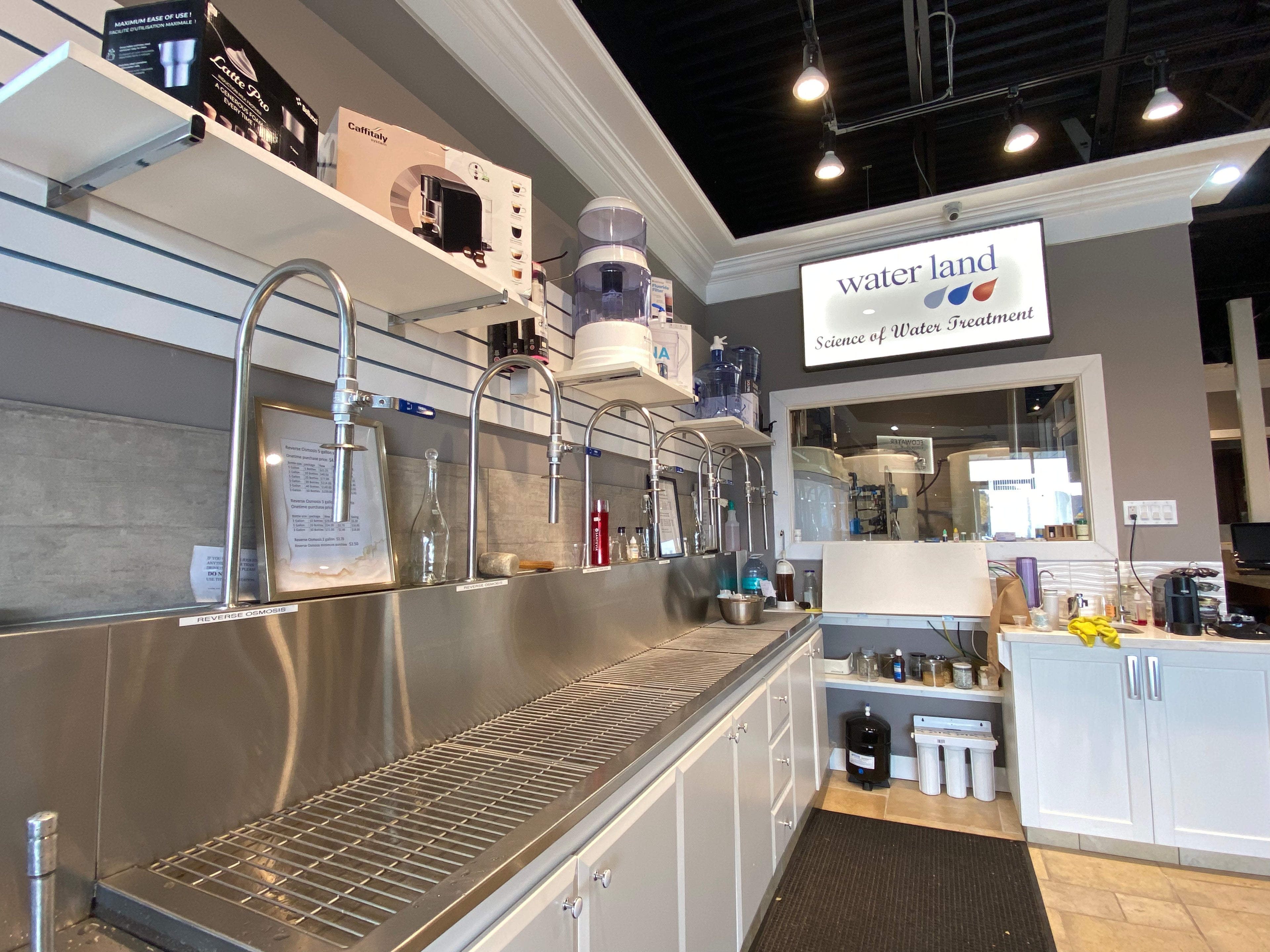Next to air, water is the most important element for our survival and to help maintain optimum health.
Water Land has been in the water purification business since 2005. We are proud to serve the Cities of Mississauga, Oakville, Toronto and Hamilton. Focusing on the neighbourhoods of Clarkson, Port Credit, Lorne Park, Clearview, Morrison, Ancaster, Stoney Creek and West Mountain, we provide a variety of water filtration products and services.
Opened by the original owner who, at the time had problems with kidney stones, recognized that drinking pure filtered water relieved his condition. Acknowledging that purified water not only helped persons who were susceptible to kidney and gall stones, but was also a key ingredient in maintaining and improving overall health, he installed a state of the art water purification system with a large, modern and functional refill station. He also equipped the store with the latest and best water filtration and purification products available.
Our family purchased Water Land from the retiring owner in January 2012. We are just as committed to bringing quality products at affordable prices to our customers, while also extending product and health information on a regular basis, through literature, personal experience and our website. Our family has been making lifelong healthy lifestyle choices and have been drinking purified water for almost two decades. We will do our best to deliver a pleasant customer service experience.
Feel free to browse our collections. We are continually updating our site with new products and specials. If you have any questions, don't hesitate to contact us.
OUR STORE
What Can We Do To Provide Healthy Water For Our Family?
The simplest, most effective and also the most economical way to treat municipal tap water is a home water filter. Multi-media water filters that combine activated carbon with ion exchange media such as KDF are an excellent choice.Carbon and KDF work together to remove or reduce traces of contaminants such as chlorine, lead, Cryptosporidium and Giardia cysts, synthetic chemicals, volatile organic compounds (VOCs), MTBE, pesticides (lindane, atrazine), chemicals linked to cancer (benzene, TTHMs, toxaphene) and hundreds of other chemical contaminants that may be present causing bad taste and odors in your drinking water.
The result is healthy, great-tasting water that still contains natural trace minerals that are beneficial to optimal well-being and health.








